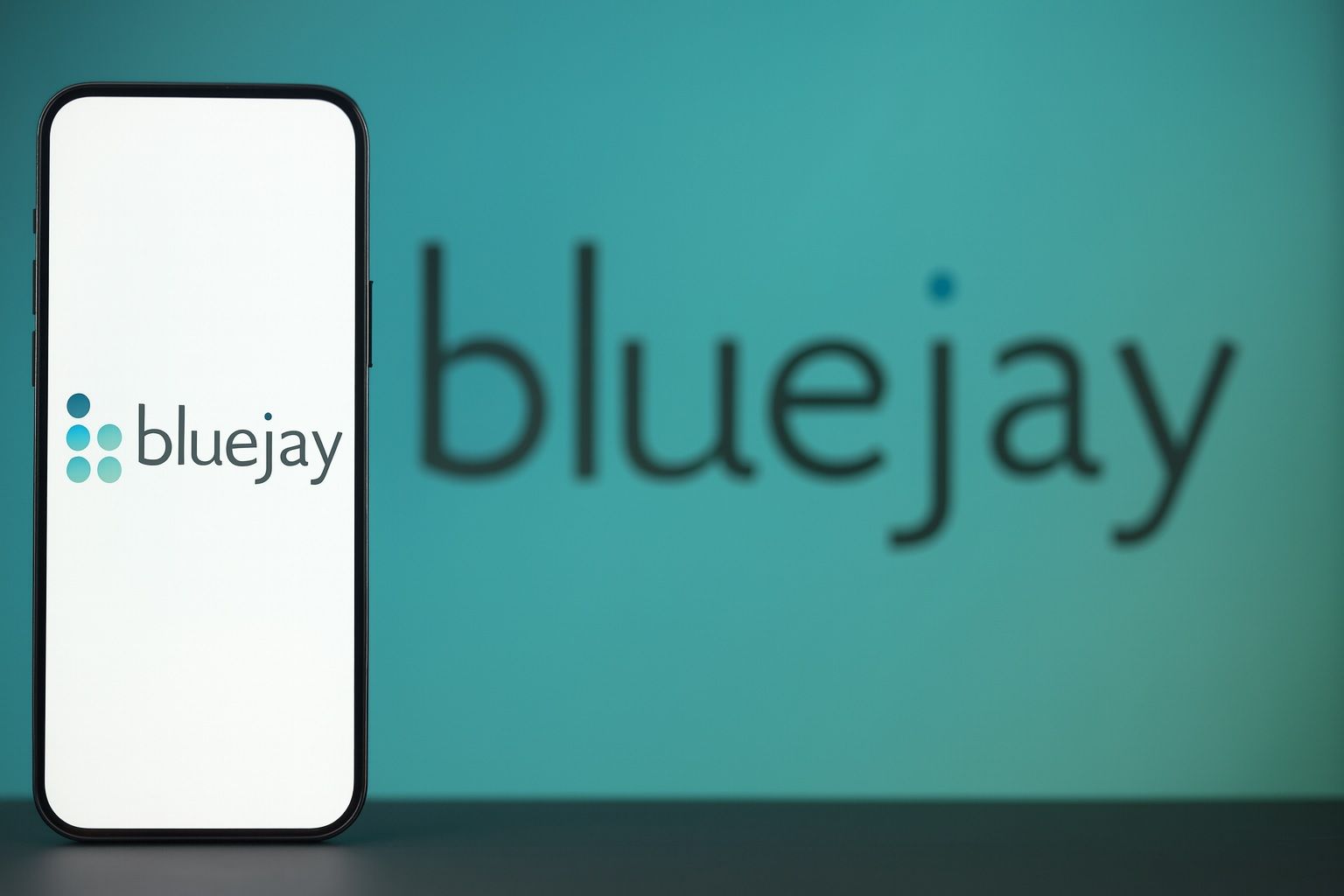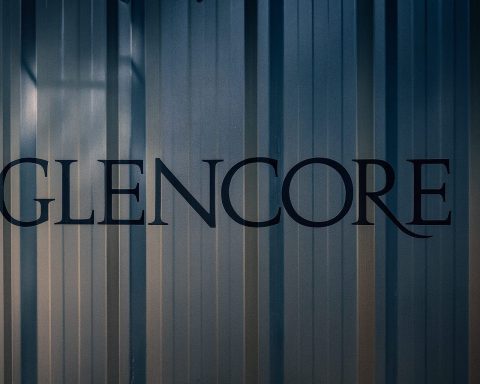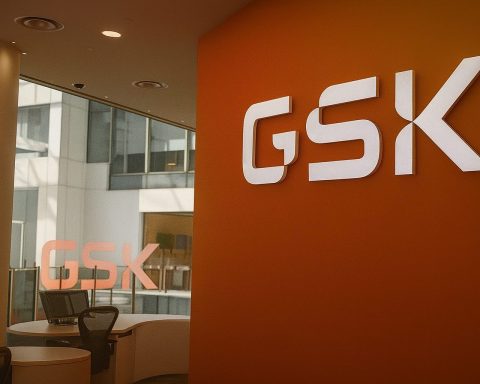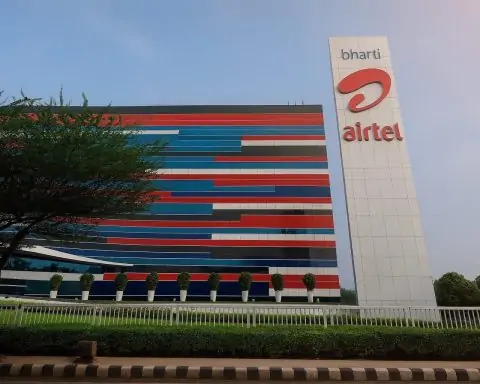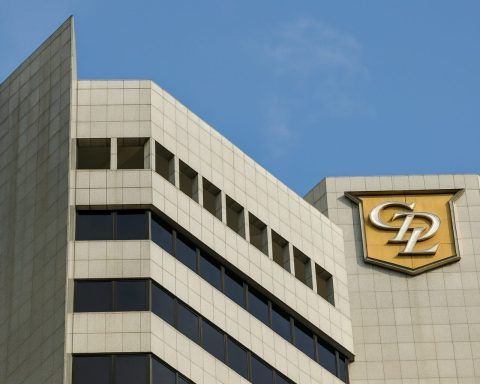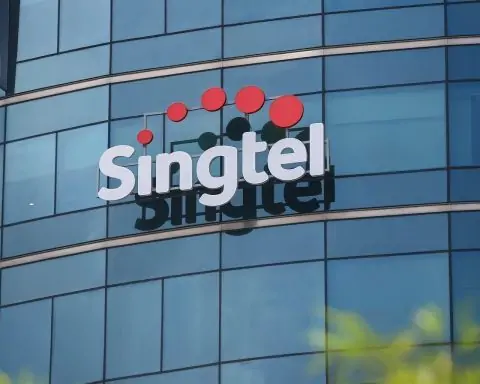- Surging Stock Price: Bluejay Diagnostics’ stock (NASDAQ: BJDX) has spiked dramatically. As of October 9, 2025, BJDX traded around $4.53 per share, up over 142% in a single day [1] [2]. This follows a 137% pre-market jump to ~$4.43 after news of a major partnership, reversing a 12.6% drop the day prior [3] [4]. Heavy trading volume (~40 million shares on Oct 9 vs ~154k average) accompanied the surge [5].
- Partnership Catalyst: The rally was driven by Bluejay’s expanded partnership with SanyoSeiko, a Japanese medical device manufacturer. Announced Oct 9, the deal has SanyoSeiko take on end-to-end manufacturing and supply chain support for Bluejay’s Symphony diagnostic platform [6] [7]. Bluejay’s CEO hailed the partnership as a “key milestone” that strengthens supply chain resilience and preps Symphony for broader clinical validation and market launch [8].
- Symphony Sepsis Test: Bluejay is developing Symphony, a rapid near-patient testing system aimed at critical care diagnostics [9]. Its lead application is an IL-6 biomarker test for sepsis triage and monitoring, designed to deliver quick, reliable results to guide treatment [10] [11]. Pilot studies (SYMON-I) showed IL-6 levels can predict sepsis mortality, and a pivotal trial (SYMON-II) is underway [12]. However, Symphony is not yet FDA-cleared – Bluejay is targeting a 510(k) submission by late 2027 with hoped-for approval by 2028 [13].
- Fundamentals & Financial Health:Bluejay has no product revenue to date and continues to operate at a loss. [14] Its finances are strained – as of mid-2025 it held only ~$5.7 M cash versus $7.7 M in 2024 losses [15]. The company projects needing $30 M in additional funding by 2027 to reach commercialization [16]. In an aggressive cost-cutting move, Bluejay slashed its staff ~90% to just 5 employees and even proposed a reverse stock split to maintain Nasdaq listing compliance [17] [18]. Prior to this week’s spike, BJDX’s market cap was a mere ~$3.2 M [19], highlighting its micro-cap status and high risk profile.
- Market Sentiment & Volatility: Bluejay’s stock has been extremely volatile. Despite the latest pop, shares are still down ~61% year-to-date and –68% over the past 12 months [20]. The tiny float (recently ~1.5 M shares) and surge in volume suggest a speculative frenzy – a pattern seen in many micro-cap biotech stocks. Analysts note that low-float biotechs can skyrocket on momentum or short squeezes unrelated to fundamentals [21]. Indeed, earlier in the week Bluejay already jumped ~41% on “positive sentiment” around its “promising diagnostic innovations,” even before any official news [22]. Such penny-stock volatility cuts both ways: rapid gains can evaporate just as fast, underscoring the elevated risk for investors.
Company Overview: A Near-Patient Diagnostics Specialist
Bluejay Diagnostics, Inc. is a small Massachusetts-based medical diagnostics company focused on rapid near-patient testing solutions for critical care settings [23]. The company’s mission is to improve emergency and intensive care outcomes by enabling faster, point-of-care testing for life-threatening conditions like sepsis [24]. Bluejay’s flagship product-in-development is the Symphony system – an automated, “sample-to-result” analyzer that uses disposable cartridges to measure key biomarkers from a patient’s blood sample in minutes [25] [26].
Symphony’s first target analyte is interleukin-6 (IL-6), an inflammatory marker that rises during infection and sepsis. In hospitals today, diagnosing sepsis early is challenging – it often relies on clinical judgment and lab tests (like blood cultures) that can take many hours. Bluejay’s vision is that a rapid IL-6 test at the bedside could alert doctors to developing sepsis far sooner, allowing earlier intervention in critical care [27]. During a pilot study (SYMON-I), Symphony’s IL-6 test showed promise: IL-6 level trends correlated with sepsis severity and appeared predictive of mortality risk [28]. This led Bluejay to initiate SYMON-II, a pivotal clinical trial to further validate the test’s accuracy in triaging sepsis [29].
The Symphony platform itself is based on a novel implementation of tried-and-true lab techniques. It combines the sensitivity of ELISA immunoassays with microfluidics and nanotechnology to deliver lab-quality results rapidly at the point of care [30]. The benchtop device uses single-use cartridges pre-loaded with reagents – a nurse can simply add a patient’s blood sample to the cartridge and insert it into the machine, which then automatically runs the assay and displays results without any further handling [31]. This is intended to make advanced tests like IL-6 accessible even in smaller clinics or emergency departments that lack full laboratories [32]. Importantly, Symphony remains in development and is not yet FDA-cleared for clinical use (currently labeled for research use only) [33]. Gaining regulatory clearance will be a critical milestone before any commercial rollout.
Latest News: Expanded SanyoSeiko Partnership Spurs Rally
On October 9, 2025, Bluejay Diagnostics announced a significant strategic partnership expansion with SanyoSeiko Co., Ltd., and the stock’s explosive rally immediately followed [34]. SanyoSeiko is a Japan-based contract manufacturer specializing in medical devices and precision engineering [35]. Bluejay and SanyoSeiko have actually been partners for some time – SanyoSeiko was already involved in producing components of the Symphony system. The new agreement, signed on October 3 and revealed to investors on Oct 9, greatly expands SanyoSeiko’s role in commercializing Symphony [36] [37].
Under the amended Master Service and Supply Agreements, SanyoSeiko will now provide end-to-end support for the Symphony platform’s manufacturing and supply chain [38]. This includes taking charge of manufacturing redevelopment for the Symphony analyzers and test cartridges (implementing any needed hardware, software, or design updates), sourcing raw materials and ensuring vendor compliance, and serving as the contract manufacturer for full-scale production of the devices and cartridges [39]. Essentially, SanyoSeiko is being entrusted with the entire production pipeline – from assembling kits, labeling and packaging, to shipping finished units, as well as quality control at each step [40] [41]. The partnership also extends to regulatory and quality management support, plus storage and maintenance of production equipment [42].
Bluejay’s CEO Neil Dey highlighted the deal’s importance, stating that formalizing SanyoSeiko’s role as manufacturing partner “marks a key milestone” in the company’s strategy [43]. He noted it will “strengthen our supply chain resilience, secure high-quality production capacity, and advance readiness for broader clinical validation and market introduction” [44]. In other words, Bluejay is shoring up its ability to scale production before Symphony enters wider clinical trials and pursues regulatory approval. SanyoSeiko’s deeper involvement should help Bluejay de-risk the commercialization process – the manufacturer’s expertise can ensure that when Symphony needs to ramp up (for FDA validation studies or eventual market launch), the hardware and cartridges can be produced reliably at high quality [45] [46].
From SanyoSeiko’s side, CEO Futoshi Shirakawa expressed optimism and commitment, saying their technical capabilities and experience will support Symphony’s successful commercialization, which he believes has potential to “make a meaningful impact in critical care diagnostics worldwide.” [47] This vote of confidence from an established device maker adds credibility to Bluejay’s small operation.
The market reacted instantly to the news. Bluejay’s press release hit on Oct 9 at 6:30am ET, and in pre-market trading the stock rocketed over 100% within hours [48] [49]. By the regular session open, BJDX was up around 115% and climbing [50] [51]. Traders clearly seized on the partnership as a sign that Bluejay is moving closer to actual commercialization of Symphony. In a single day, Bluejay’s market cap went from under $5 million to an estimated ~$10–12 million – still tiny in absolute terms, but more than doubling shareholder value overnight. The partnership news has effectively injected fresh “hope hype” into a beaten-down penny stock, as investors bet that Bluejay might finally transition from an R&D-stage company toward revenue-generating status in the coming years.
It’s worth noting that Bluejay had signaled this manufacturing alignment earlier. In its mid-year update (June 2025), management mentioned plans to secure a “qualified FDA-registered manufacturing partner” for Symphony cartridges [52]. SanyoSeiko’s expanded role presumably fulfills that aim. In fact, the official 8-K filing for this amended partnership was made on Oct 9 along with the press release [53]. This suggests Bluejay’s management wants to reassure stakeholders that despite its minimal in-house resources, it has a capable partner to handle the heavy lifting of production and supply chain. Manufacturing readiness is often a gating factor in medical device approval – regulators will scrutinize whether a company can consistently produce the device to specifications. By leveraging SanyoSeiko, Bluejay is bolstering that case in advance.
Stock Performance: Roller-Coaster Ride for BJDX
For those just tuning into Bluejay now, the stock’s recent performance has been extremely volatile and speculative. BJDX was languishing under $2 for most of 2025, hurt by dilution and the lack of near-term revenue. In fact, even after this week’s bounce, the stock remains deeply in the red over longer horizons – down about 61.6% year-to-date in 2025 and –68% over the past 12 months [54]. The company executed a 1-for-20 reverse stock split in July (to avoid Nasdaq delisting for a sub-$1 price), which temporarily propped the share price above $4 only to see it slide back into the $1–2 range by the fall. (Note: The reverse split reduced the float dramatically, which partly set the stage for the recent explosive moves.)
Heading into October, BJDX was trading around $1.50. On Oct 5, it closed at $1.55 with no obvious news [55]. Then the action heated up: by Oct 7 the stock spiked to an intraday high around $3.06 (nearly doubling in one day) amid unusually bullish sentiment on forums and high volume [56]. Trading blogs noted “positive sentiment builds around its promising diagnostic innovations” as the catalyst for this early run-up [57] – essentially, traders were speculating that something big was brewing. This proved prescient, as the SanyoSeiko partnership was formalized that same day (Oct 7) behind the scenes, though only publicly disclosed on Oct 9.
After a brief pullback on Oct 8 (the stock fell ~12% that day, perhaps on profit-taking) [58], the press release on Oct 9 sent BJDX into orbit. The share price opened around $3.30 and rapidly surged, hitting highs over $4.50 (+142% intraday) [59] [60]. Volume was enormous: roughly 40 million shares changed hands by midday [61], compared to an average daily volume of just ~150k in prior months. Such a trading frenzy suggests involvement of momentum players, day-traders, and possibly a short squeeze (trapped short sellers scrambling to cover positions). In fact, prior to the reverse split, BJDX had been on some short-sellers’ radar due to its cash woes – any shorts still in the trade got caught by this unexpected double-up.
This kind of parabolic move is not unprecedented among micro-cap biotech stocks, especially those with low floats. For example, Xenetic Biosciences (another tiny biotech) similarly skyrocketed 160% in early October purely on momentum, with analysts attributing it to “speculative frenzy (potential short covering or day-trader interest) rather than fundamentals.” [62] In Xenetic’s case, no major news was even released during its jump [63] – whereas Bluejay at least had concrete news. Still, the parallel underscores that micro-cap price action can disconnect from intrinsic value in the short term. Multiple small healthcare names (Xenetic, Universe Pharmaceuticals, XTL Biopharma, etc.) all soared in tandem that week amid a broader risk-on wave in penny stocks [64]. Bluejay’s spectacular rally appears to be part of this cohort, turbo-charged by its headline announcement.
From a technical analysis perspective, BJDX’s chart is highly volatile and not for the faint of heart. Prior to this week, the stock had been trending down under key moving averages, reflecting bearish momentum. TipRanks’ automated technical rating had flashed a “Sell” signal on BJDX [65], and for good reason: the stock was in a prolonged slump due to dilution and lack of tangible progress. The sudden breakout on Oct 9 blasted the price to its highest level in months, clearing any resistance from the summer. However, traders should be cautious – such vertical rallies often retrace once the initial euphoria fades. Intraday on Oct 9, BJDX already swung wildly (volatility halts were likely triggered on exchange). The stock could not sustain the $4+ highs for long; by late afternoon it was back near the mid-$3s as some traders cashed out gains. Support on the downside may emerge around the previous day’s close (~$1.87) but below that the stock has little safety net. In short, expect continued sharp swings. This is a classic high-risk, high-reward penny stock scenario driven largely by news flow and trader sentiment rather than fundamentals.
Analyst & Expert Opinions
Given Bluejay’s tiny size, Wall Street analyst coverage is virtually non-existent – no major brokerage has an official rating or price target on BJDX. However, financial media and independent analysts have weighed in with perspectives:
- TipRanks Analysis: Investment research site TipRanks noted the stock’s spike on the partnership news and pointed out the difficult fundamentals. TipRanks’ AI-driven analyst “Spark” rates BJDX as “Underperform”, citing “poor financial performance, with no revenue and continuous losses,” and a generally bearish technical and valuation picture [66]. In a “Why is BJDX up 115% today?” commentary, TipRanks contributor William White observed that Bluejay “rocketed higher… after [it] announced an expanded partnership” with SanyoSeiko, but also reminded readers that the shares had dropped 61% YTD before this move [67]. The implication is that while the news is positive, Bluejay’s valuation remains hard to justify until it shows real progress on revenue or approvals. TipRanks also highlighted the massive surge in trading volume (~40 million vs 154k avg) as a sign of newfound speculative attention on the stock [68].
- Trading Community Sentiment: On penny-stock trading forums and blogs, Bluejay’s Symphony platform has garnered buzz for its potential in sepsis care. Early in the week, Timothy Sykes’s penny stock news site commented that “BJDX stock surged ~30% as positive sentiment builds around its promising diagnostic innovations.” [69] The StocksToTrade blog similarly attributed an August run-up to “promising FDA designations and results” for Bluejay [70]. In other words, retail traders are latching onto any hint of progress – whether an accepted conference abstract, a pilot study result, or speculation of FDA fast-track status – to justify bullish bets. This retail optimism can fuel sharp rallies, but it’s often short-lived if not backed by concrete outcomes.
- Industry Experts: Within the medical diagnostics field, Bluejay is still a nascent player, but the concept of rapid sepsis testing is widely acknowledged as valuable. Competitors and experts note that sepsis is a huge unmet need – it causes an estimated 11 million deaths globally each year and is a leading cause of death in U.S. hospitals [71] [72]. Quick diagnostics could be game-changing. Established companies like Roche and Becton Dickinson are also active in sepsis diagnostics R&D [73]. Bluejay’s approach with IL-6 is one angle; other firms (for example, T2 Biosystems) are developing rapid tests that directly detect pathogens or other sepsis markers. There is no guarantee Bluejay will beat larger competitors to market. As one industry observer quipped, for micro-cap biotech devices, “the science can be exciting, but execution is everything.” Bluejay will need to execute almost flawlessly (in clinical validation, regulatory approval, and commercialization) to capitalize on its innovation before cash runs out.
At present, investor opinion on BJDX is sharply divided. On one hand, optimists argue the stock is undervalued if Symphony succeeds – the global sepsis diagnostics market is over $1 billion and growing ~8% annually [74], so a breakthrough product could see substantial adoption. On the other hand, skeptics point to Bluejay’s <10-person headcount and say this rally could be a classic “sell the news” scenario once the excitement over the partnership fades. Without any revenue or FDA clearance in sight for at least two years, Bluejay remains more of a story stock than an investment grounded in current financials. The absence of professional coverage means little external validation; it’s mostly retail traders and company press releases narrating the story right now.
Clinical and Regulatory Outlook
Bluejay’s investment thesis hinges almost entirely on the clinical and regulatory progress of the Symphony IL-6 test. Here’s where things stand and what’s next:
- Pivotal Trial in Progress: Bluejay is conducting SYMON-II, a pivotal clinical study of the Symphony IL-6 test in a real-world hospital setting [75]. This trial will enroll sepsis patients and measure how well Symphony’s rapid IL-6 readings correlate with patient outcomes and standard lab diagnostics. SYMON-II was initiated after a smaller SYMON-I pilot showed that IL-6 trends were meaningful – patients with higher IL-6 had worse outcomes, suggesting the test could stratify risk [76]. If SYMON-II confirms that Symphony can reliably predict or detect sepsis earlier than current methods, it would be strong evidence for the FDA and healthcare providers of the test’s utility.
- Regulatory Timeline:Bluejay has a long road to FDA clearance. The company has guided that it aims to submit a 510(k) application by Q4 2027 and hopes for approval around Q3 2028 [77]. This timeline, surprisingly long, reflects both the regulatory process and Bluejay’s resource constraints. A 510(k) submission indicates Bluejay will seek clearance by showing Symphony is substantially equivalent to an existing predicate device. It’s possible they need to generate extensive clinical data first (hence SYMON-II and perhaps additional studies). The late 2027 target suggests at least two more years of development and data-gathering. Even that could be optimistic if unforeseen hurdles arise. For context, larger diagnostic companies often get such products approved faster, but as a small firm Bluejay likely has to be meticulous and might face iterative feedback from FDA.
- No FDA Breakthrough Designation (Yet): Investors might wonder if Symphony could qualify for the FDA’s Breakthrough Devices Program (which can expedite review for devices addressing unmet needs). So far, Bluejay has not announced any such designation. The “promising FDA designations” alluded to in some stock blogs [78] likely refer to more routine steps (e.g., Bluejay’s pre-submission meetings with FDA or perhaps an accepted abstract at a conference [79]). A Breakthrough Device designation would be a notable positive – it would signal FDA’s recognition of Symphony’s potential. Bluejay may pursue this if SYMON-II data are compelling, but nothing official has been stated.
- Clinical Use Case and Competition: Bluejay is laser-focused on sepsis IL-6 testing, which is a niche but potentially impactful use case. IL-6 rises rapidly (often earlier than other markers like lactate), so an IL-6 test could give an early warning of sepsis. However, IL-6 alone is not a definitive diagnostic; it would likely be used alongside other clinical signs and tests. Some competing technologies in rapid sepsis diagnostics include: molecular tests that detect bacterial DNA in blood (e.g., T2 Biosystems’ T2Dx panels), host-response panels that measure multiple immune markers, and traditional blood culture acceleration systems. Bluejay’s bet is that a simple, one-marker immunoassay (IL-6) run on a portable device is a cost-effective solution that hospitals could easily adopt. If approved, Symphony would likely start in emergency departments, ICU units, and perhaps urgent care centers as a triage tool. Its ultimate clinical success will depend on whether using the IL-6 test demonstrably improves patient outcomes (for instance, by prompting earlier antibiotic treatment or ICU admission and thereby reducing mortality). Proving that will require not just FDA clearance but also post-market studies or real-world evidence.
- Milestones to Watch: In the medium term (next 12–18 months), investors should watch for updates on SYMON-II trial enrollment and results. Any interim data or clinical publications would be significant. Bluejay will also need to secure additional clinical sites or partnerships (possibly with hospitals or academic centers) to broaden validation. On the regulatory front, a key step would be filing for FDA Breakthrough Device designation or at least completing all necessary pre-submission consultations with the FDA – any news in this vein could boost confidence that the 2027 timeline is on track. Lastly, since the SanyoSeiko deal focuses on manufacturing, progress there is also crucial: Bluejay will have to show it can produce consistent devices and cartridges at scale. Successful manufacturing verification/validation runs and quality audits (perhaps by mid-2026) would be another de-risking event on the path to approval [80].
In summary, the clinical outlook is cautiously optimistic but lengthy. Bluejay has a viable prototype and encouraging early data, yet still years of development and regulatory navigation ahead. Any number of pitfalls could occur – from clinical results that fall short, to FDA requests for more data, to delays in trial enrollment (especially with the company’s limited resources). The partnership with SanyoSeiko mitigates some execution risk on the manufacturing side, but regulatory risk remains substantial. Approval by 2028 is far from guaranteed. Investors in BJDX need to be prepared for a long journey on the clinical front, with the understanding that Symphony’s success is an all-or-nothing proposition for the company.
Financial Fundamentals and Cash Burn
Bluejay’s fundamentals underscore why its stock is considered speculative. The company is pre-revenue and has been subsisting on shareholder capital. According to its latest filings, Bluejay reported zero revenues and a net loss of $1.96 M for the first half of 2025, in line with prior years’ losses [81]. The balance sheet had around $5–6 million in cash mid-year 2025 [82], thanks in part to a warrant inducement financing of $3.7 M in April 2025. However, that cash is being consumed by R&D and operating expenses (Bluejay’s free cash flow was about –$2 M over the period [83]). With virtually no revenue expected until Symphony is approved and marketed, Bluejay will remain dependent on external financing for the foreseeable future.
The mid-year corporate update (June 2025) laid out stark numbers: management estimated needing approximately $30 M in additional funding to get through 2027 and achieve a commercial launch of Symphony [84]. This is a huge sum relative to the company’s <$10 M market cap. It likely means substantial dilution ahead – through new equity offerings, warrant deals, or perhaps partnering/licensing deals. The company even explicitly warned of this, indicating it must raise capital to continue R&D and that current cash might only last into early 2026. For existing shareholders, each new fundraising round could dilute their ownership unless the stock price appreciates enough to offset it.
Bluejay has already taken painful steps to extend its runway. In mid-2025 the company implemented aggressive cost-cutting, including reducing headcount to just 5 employees (from over 50 a year prior) [85]. This 90% staff reduction, while conserving cash, also highlights how skeletal the operation has become – essentially a “virtual” company relying on partners (like SanyoSeiko) and a few key scientists/executives to carry on the work. Bluejay also moved out of some facilities to cut costs and consolidated operations. These measures lowered its monthly burn rate, but the flip side is that execution risk may increase when so few people are wearing many hats.
Another consequence of Bluejay’s low share price was the risk of Nasdaq delisting (Nasdaq requires a minimum $1 bid price). To address this, shareholders approved a reverse stock split (1-for-20) which took effect in late July 2025 [86]. The reverse split temporarily boosted the stock price from around $0.20 to ~$4.00 (pre-split basis), restoring compliance. However, the post-split price slid under $2 by autumn, putting Bluejay at risk of non-compliance again. The recent 100%+ rally back above $4 has bought some breathing room on this front. Nevertheless, if the price sinks below $1 for an extended period, Bluejay could face delisting or may have to execute yet another reverse split down the line. Delisting would be devastating (moving to OTC markets would further reduce liquidity and access to capital), so management will do everything possible to avoid it – including potentially rushing out positive news or deals when the price falters.
In terms of capital structure, Bluejay has a relatively clean balance sheet aside from the looming need for cash. It carries minimal debt (just a small long-term equipment lease, under $0.1 M) [87], so bankruptcy is not an immediate concern as long as they can raise equity. The company’s book value is around $5–6 M (mostly cash), which, interestingly, meant the stock was trading at below 1x book value before this rally – a sign of market skepticism (TipRanks noted a price-to-book of 0.43 at one point [88]). After the rally, BJDX is closer to 1.5–2x book. This is still cheap in theory, but that book value will erode with each quarter of cash burn. The negative operating cash flow and lack of revenue make traditional valuation metrics (P/E, PEG, etc.) meaningless – Bluejay’s valuation is essentially based on the probability-weighted future value of Symphony succeeding.
One potential lifeline for Bluejay’s finances would be a strategic partnership or grant. The company could seek a larger diagnostics or healthcare partner to co-fund Symphony’s development in exchange for rights to market it (especially overseas). Or it might apply for government grants related to sepsis research (e.g., BARDA or NIH grants, since sepsis is a public health priority). Such non-dilutive funding could reduce the need for dilutive equity raises. There’s no public info on any imminent deals of this sort, but it’s something to watch for. Absent that, investors should expect Bluejay to issue new shares whenever the stock price spikes (indeed, the warrant inducement in April 2025 was done when shares jumped briefly – management took advantage of that window to bring in cash).
Bottom line: Bluejay’s current finances are fragile. The company is essentially a biotech start-up burning cash to hopefully create a valuable diagnostic tool in a few years. Until then, it will likely operate at a loss and dilute shareholders to fund operations. This is not unusual for early-stage biotechs, but it means investing in BJDX requires faith not just in the science, but in management’s ability to keep the lights on through smart financing moves. The recent stock surge, if it holds, ironically provides an opportunity – Bluejay could raise a chunk of cash at these higher prices (perhaps via an ATM offering or secondary) to extend its runway. Investors should be on alert for any such capital raise announcement in the coming weeks, as it could temporarily pressure the stock (though in the long run securing cash would be positive for project survival).
Sector Comparison: Bluejay vs. Diagnostics Peers
Bluejay operates in the biotech diagnostics sector, which is known for its high stakes and volatility. A few points of comparison:
- Size and Pipeline: Bluejay (market cap <$15M) is tiny even among micro-cap peers. By contrast, some other diagnostics startups in sepsis or critical care have larger pipelines or multiple products. For example, T2 Biosystems (TTOO), which offers rapid blood infection tests, has a market cap around $50M (post its own volatility) and already has FDA-cleared products (though it struggles financially). Larger diagnostics firms like BioMérieux or Roche are multi-billion-dollar companies with broad test menus – not true peers, but they underscore the gap between a single-product micro-cap and established players.
- Stock Performance: The diagnostics and small-cap biotech indices have been under pressure through 2024–2025 due to rising interest rates and risk-off sentiment. Many peer stocks hit all-time lows this year. Bluejay was no exception until its recent bounce. It’s instructive to look at how similar “story stocks” fared: AnPac Bio, Todos Medical, Aethlon Medical – all had momentary spikes on news but ultimately drifted down if commercial traction didn’t follow. Bluejay’s Oct 9 rally is impressive, but whether it marks the start of a sustained uptrend or a brief spike remains to be seen. Peers that have delivered concrete results (e.g., securing FDA approval or meaningful sales) tend to hold value better than those that are solely hype-driven.
- Product Differentiation: In sepsis diagnostics, speed and accuracy are the key competitive axes. Bluejay’s Symphony will compete not only with other diagnostics, but with hospital inertia – many hospitals simply rely on standard lab tests and clinical scoring for sepsis today. To gain adoption, Symphony will need to prove it’s faster and adds actionable info. Competitors in rapid sepsis testing (like T2’s pathogen detector or newer molecular point-of-care devices) each have different approaches. It’s too early to say if Bluejay’s IL-6 focus is the winning formula. However, IL-6 is a unique niche – if Bluejay carves out a role as the go-to IL-6 test system, it could potentially partner with larger hospital diagnostic companies to distribute it.
- Regulatory Risk Across Sector: Most diagnostics peers face similar lengthy approval processes. It’s not uncommon for development-stage diagnostics companies to project a launch 2–3 years out, as Bluejay is doing. Investors in this sector often have to be patient and endure periods of little news. That said, when one company in the sector gets a positive regulatory decision, it can buoy others (a rising tide effect). Conversely, a high-profile failure can cast doubt on similar technologies. For instance, if another IL-6 or sepsis test were to fail in trials, it might dampen enthusiasm for Bluejay by analogy.
In summary, Bluejay’s story – small company with one big idea, trying to make it in a competitive medical market – is emblematic of the high-risk biotech diagnostics space. Compared to peers, Bluejay stands out for having such a low market cap and tiny float, which partly explains its extreme volatility. The upside is that any significant progress (FDA breakthrough designation, trial success, a partnership with a big player) could re-rate the stock substantially higher given the low base. The downside is that many peers show that without real progress, initial excitement fades and valuations deflate. Investors should monitor not just Bluejay’s news, but also the overall diagnostics industry developments, as they can inform Bluejay’s prospects and investor sentiment toward it.
Outlook and Medium-Term Forecast
Looking ahead, the medium-term outlook for Bluejay Diagnostics is a mix of potential breakthrough and significant risk. Here are key factors and a balanced forecast:
- Base Case (Cautious Optimism): In a base-case scenario, Bluejay successfully executes its next steps: SanyoSeiko completes the redevelopment of the Symphony device and cartridges within the next 6–12 months, enabling Bluejay to use those improved units in its pivotal trial and future studies. By mid-2026, Bluejay announces positive interim data from SYMON-II, demonstrating that using Symphony leads to earlier detection of sepsis compared to standard care. This could prompt the company to file for FDA Breakthrough Device designation in 2026, potentially accelerating the regulatory timeline a bit. Bluejay will also need to raise capital; ideally, it does so strategically – for example, securing a strategic partnership or licensing deal by 2026 where a larger diagnostics firm takes an equity stake or provides funding in exchange for future sales rights. This non-dilutive (or less dilutive) funding would ease the $30M burden. Under this scenario, by 2027 the FDA filing is on track and investors begin valuing Bluejay not on current cash but on future revenue potential. Medium-term share price forecast: if all goes well, BJDX could sustain a valuation in the tens of millions (say $30–50M market cap) as optimism builds toward approval. That would translate to a stock price in the $8–12 range within 1–2 years, assuming some dilution along the way. This is speculative, but not impossible if Symphony’s data and strategic backing materialize.
- Bull Case (Rapid Upside): In a more bullish case, Bluejay might attract buyout interest even before approval. If Symphony’s concept is validated sooner (for instance, if another study or perhaps real-world emergency room evaluations show it saves lives), a larger company might decide to acquire Bluejay for its technology. Given the small size, any acquisition would likely come at a hefty premium to current price – perhaps on the order of $50–100M (which would be $15+ per share depending on dilution). This bull case likely requires a catalyst such as exceptional clinical results or an early regulatory green light. It’s also predicated on a frothy market environment where bigger fish are actively gobbling up promising diagnostics startups. While not impossible, this is a low-probability scenario until at least some clinical milestones are achieved.
- Bear Case (Setbacks and Decline): On the flip side, the risks are considerable. In a bear-case scenario, Bluejay struggles to gather the necessary data or funding. Perhaps SYMON-II faces delays or yields lukewarm results that don’t strongly differentiate Symphony from existing tools. Maybe the FDA requires an even larger trial, pushing timelines out further. Meanwhile, frequent share issuances could grind the stock back down, undoing the recent spike. If investors lose faith (especially if the broader market turns risk-averse), BJDX could drift back towards penny-stock territory under $1, or worse, face delisting if it can’t prop the price up. In the absolute worst case, Bluejay might run out of cash and be forced to suspend operations or sell off its technology at a fire-sale price, effectively wiping out equity holders. This scenario would see the stock price crater – potentially back to pre-split equivalents (pennies).
- Risk Factors to Monitor: Key risks include clinical risk (Symphony might not prove as useful as hoped – e.g., IL-6 could be too nonspecific, leading to false alarms or insufficient predictive value), regulatory risk (FDA could demand more extensive trials or even a more rigorous approval pathway than 510(k), since there isn’t an exact predicate device for an IL-6 sepsis triage test), and execution risk (as a tiny company, any mishap in manufacturing scale-up or quality control could cause costly delays). Additionally, financial risk looms large: raising $30M could double or triple the share count, heavily diluting current shareholders if done at low prices. Macro factors like rising interest rates could also hurt – in a higher-rate environment, investors are less willing to fund cash-burning startups, and acquisitions become pricier to finance.
- Market Sentiment Wildcard: One wildcard is that market sentiment for biotech can swing drastically. If there is a rotation back into speculative biotech stocks (as sometimes happens cyclically), Bluejay might benefit from generalist money inflows regardless of its individual progress. Conversely, if there’s a market downturn, micro-caps like BJDX are often the first to be sold off.
Given all of the above, an informed forecast would say: Bluejay Diagnostics’ stock will likely remain a volatile “binary” play over the medium term, highly sensitive to news. In absence of near-term revenue, the stock’s fate is tied to milestone events – each trial result, each funding announcement, each regulatory update will cause outsized moves. Investors who are bullish might view the current ~$4 price ( ~$10M market cap) as a ground-floor entry before potential clinical wins. Bears will note that $4 is also 10× higher than where the stock was just a few weeks ago, and might see this as an opportunity to take profits or even short if the price outruns reality.
Most analysts would recommend caution, emphasizing that BJDX is suitable only for risk-tolerant investors. One objective measure, the TipRanks Smart Score, currently rates BJDX poorly on fundamentals and technicals, aligning with an “Underperform” outlook due to the company’s lack of earnings and uncertain path forward [89]. Until Bluejay can demonstrate tangible progress (or at least shore up its balance sheet), a “Hold” or speculative “Buy” with a small position size might be the most prudent stance for those interested.
Conclusion and Investor Takeaway
Bluejay Diagnostics offers a classic high-risk, high-reward narrative in the micro-cap biotech arena. The company is attempting to bring a potentially life-saving sepsis test (Symphony IL-6) to market, which addresses a genuine medical need for faster diagnostics in critical care. Recent news – especially the expanded manufacturing partnership with SanyoSeiko – has injected fresh optimism that Bluejay can eventually commercialize this platform [90] [91]. The stock’s spectacular 100%+ rally on Oct 9, 2025 demonstrates both the market’s excitement for any progress and the extreme volatility inherent in such a tiny company [92] [93].
For investors, the key is balancing the opportunity against the risks:
- On one hand, if Bluejay succeeds in getting Symphony approved and adopted, the upside from today’s valuation could be multiples higher. Sepsis diagnostics is a ~$1+ billion market and growing [94], and Bluejay could carve out a profitable niche. Even the possibility of interim successes (like a partnership or buyout) provides speculative appeal in the nearer term.
- On the other hand, Bluejay faces years of work and heavy financing needs before that success might be realized. The company’s fundamentals (no revenue, tiny cash reserves, ongoing losses) lean towards the cautionary tale that many micro-cap biotechs become – dilution and delays can erode shareholder value over time. As TipRanks’ analyst succinctly put it, Bluejay is “heavily impacted by its poor financial performance” and lacks the support of institutional coverage [95]. The recent price spike, while encouraging, could just as quickly reverse.
Investors intrigued by BJDX should keep a close eye on upcoming catalysts: clinical trial updates, FDA communications, and any hints of funding or partnership deals. It may be wise to treat the stock’s moves with pragmatism – e.g. using trailing stop orders or scaling into/out of positions – given how fast conditions can change. For a general public investor, position sizing is crucial: only a small allocation (that one can afford to lose) is typically advisable for a speculative stock like this.
In summary, Bluejay Diagnostics represents a bet on a small company’s ability to deliver a big medical innovation. The stock’s recent surge on the SanyoSeiko partnership shows the market is paying attention again, but sustaining that momentum will require real follow-through by Bluejay’s management. With a strengthened manufacturing partner, an ongoing pivotal trial, and the spotlight on sepsis solutions, Bluejay has put some pieces in place. Now it must execute almost flawlessly to turn Symphony from a prototype into a commercial product. The next 6-12 months will be telling – if Bluejay can hit its milestones and keep itself funded, it may graduate from penny-stock obscurity toward a legitimate emerging med-tech story. If not, the harsh realities of the biotech sector could reassert themselves.
For now, Bluejay’s stock is a story of hope and hype tempered by hard fundamentals. Investors should approach with both eyes open – enticed by the possible reward, but fully cognizant of the substantial risks on the road ahead.
Sources:
- Bluejay Diagnostics & SanyoSeiko partnership press release (Globe Newswire/Yahoo Finance) [96] [97]
- 24/7 Market News – Bluejay stock snapshot Oct 9, 2025 (pre-market surge and volume) [98] [99]
- TipRanks – “Why Is BJDX Stock Up 115% Today?” (William White analysis of news and stock movement) [100] [101]
- TipRanks Spark AI Analyst – BJDX fundamental and technical rating (Underperform) [102] [103]
- StockTitan – Bluejay mid-year update (SYMON trial progress, FDA timeline, financials, headcount) [104] [105]
- StockTitan – Bluejay Oct 9 release (partnership details, CEO quotes) [106] [107]
- ChartMill Pre-market Movers (BJDX +137% to $4.43 on Oct 9) [108]
- Timothy Sykes/Matt Monaco – Bluejay market dynamics (early Oct price surge on sentiment) [109] [110]
- StocksToTrade (Tim Bohen) – August price jump analysis (mentions FDA results and IL-6 program) [111] [112]
- TS2 Tech (Marcin Frąckiewicz) – Xenetic Biosciences peer example (low float biotech frenzy context) [113] [114]
- Grand View Research – Sepsis diagnostics market size report [115] [116]
References
1. 247marketnews.com, 2. 247marketnews.com, 3. www.chartmill.com, 4. www.tipranks.com, 5. www.tipranks.com, 6. www.tipranks.com, 7. www.tipranks.com, 8. www.tipranks.com, 9. www.stocktitan.net, 10. www.stocktitan.net, 11. www.stocktitan.net, 12. www.stocktitan.net, 13. www.stocktitan.net, 14. www.tipranks.com, 15. www.stocktitan.net, 16. www.stocktitan.net, 17. www.stocktitan.net, 18. www.stocktitan.net, 19. www.tipranks.com, 20. www.tipranks.com, 21. ts2.tech, 22. www.timothysykes.com, 23. www.stocktitan.net, 24. www.stocktitan.net, 25. bluejaydx.com, 26. bluejaydx.com, 27. www.stocktitan.net, 28. www.stocktitan.net, 29. www.stocktitan.net, 30. bluejaydx.com, 31. bluejaydx.com, 32. bluejaydx.com, 33. bluejaydx.com, 34. www.tipranks.com, 35. www.stocktitan.net, 36. www.tipranks.com, 37. www.tipranks.com, 38. www.tipranks.com, 39. www.tipranks.com, 40. www.stocktitan.net, 41. www.stocktitan.net, 42. www.stocktitan.net, 43. www.stocktitan.net, 44. www.stocktitan.net, 45. www.stocktitan.net, 46. www.stocktitan.net, 47. www.stocktitan.net, 48. www.tipranks.com, 49. www.tipranks.com, 50. www.tipranks.com, 51. www.tipranks.com, 52. ir.bluejaydx.com, 53. www.stocktitan.net, 54. www.tipranks.com, 55. www.timothysykes.com, 56. www.timothysykes.com, 57. www.timothysykes.com, 58. www.chartmill.com, 59. 247marketnews.com, 60. 247marketnews.com, 61. www.tipranks.com, 62. ts2.tech, 63. ts2.tech, 64. ts2.tech, 65. www.tipranks.com, 66. www.tipranks.com, 67. www.tipranks.com, 68. www.tipranks.com, 69. www.timothysykes.com, 70. stockstotrade.com, 71. www.grandviewresearch.com, 72. www.grandviewresearch.com, 73. www.grandviewresearch.com, 74. www.grandviewresearch.com, 75. www.stocktitan.net, 76. www.stocktitan.net, 77. www.stocktitan.net, 78. stockstotrade.com, 79. bluejaydx.com, 80. www.stocktitan.net, 81. www.timothysykes.com, 82. www.stocktitan.net, 83. www.timothysykes.com, 84. www.stocktitan.net, 85. www.stocktitan.net, 86. www.stocktitan.net, 87. stockstotrade.com, 88. www.timothysykes.com, 89. www.tipranks.com, 90. www.tipranks.com, 91. www.tipranks.com, 92. 247marketnews.com, 93. 247marketnews.com, 94. www.grandviewresearch.com, 95. www.tipranks.com, 96. www.tipranks.com, 97. www.tipranks.com, 98. 247marketnews.com, 99. 247marketnews.com, 100. www.tipranks.com, 101. www.tipranks.com, 102. www.tipranks.com, 103. www.tipranks.com, 104. www.stocktitan.net, 105. www.stocktitan.net, 106. www.stocktitan.net, 107. www.stocktitan.net, 108. www.chartmill.com, 109. www.timothysykes.com, 110. www.timothysykes.com, 111. stockstotrade.com, 112. stockstotrade.com, 113. ts2.tech, 114. ts2.tech, 115. www.grandviewresearch.com, 116. www.grandviewresearch.com
